Explore our guide to discovering 20 delightful flowers beginning with J. From Jasmine to Jonquil, learn about their unique characteristics, growing conditions and how to incorporate these blooms into your garden for a vibrant floral display.
Flowers make our world more beautiful. Some flowers have names that start with the letter J. Let’s learn about 20 of these special flowers and how to grow them.
1. Jasmine
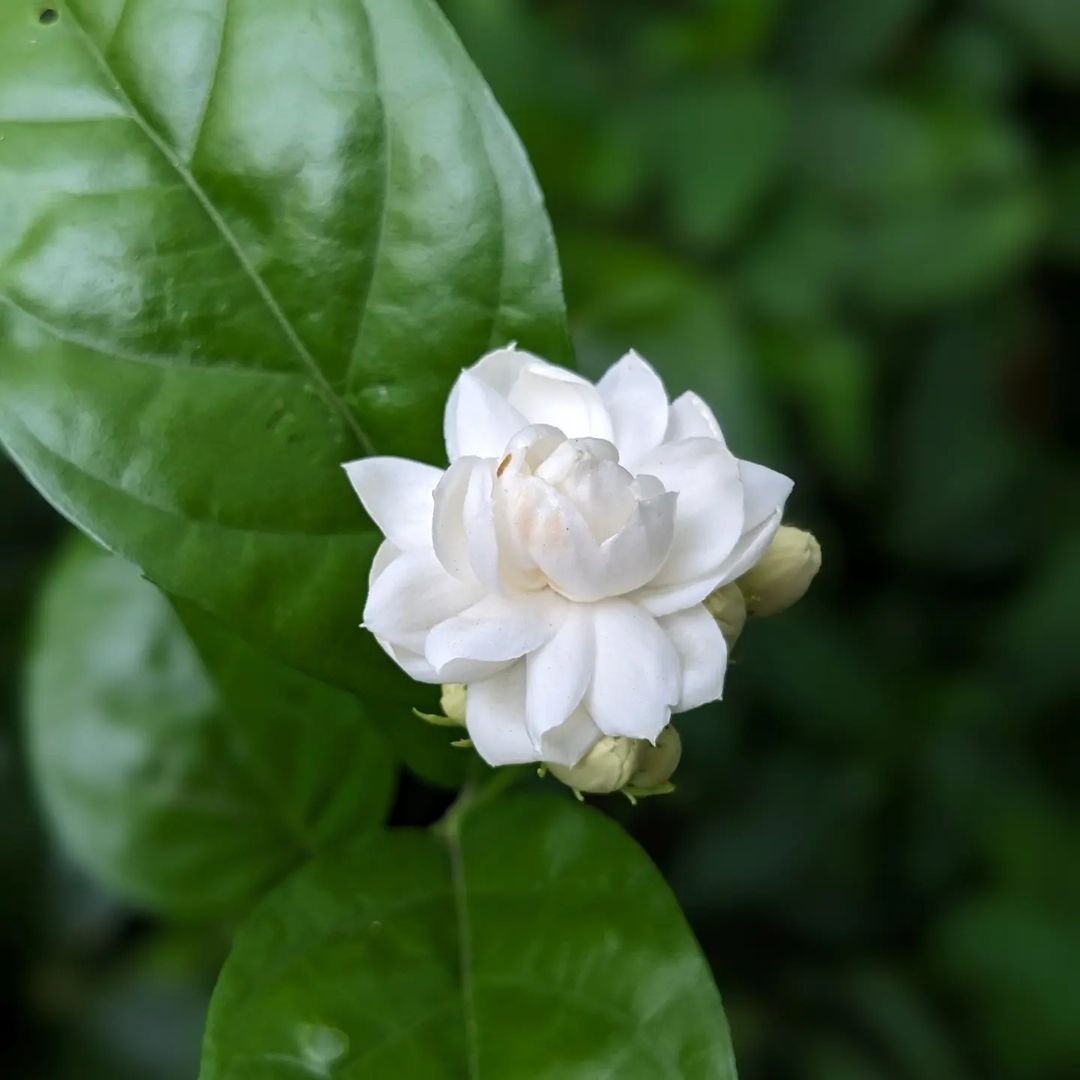
Here’s the completed chart with information about the Jasmine flower:
| Category | Details |
|---|---|
| Botanical Name | Jasminum spp. |
| Common Name | Jasmine |
| Plant Zone | 5-11 |
| Sun Exposure | Full sun to partial shade |
| Soil Type | Well-drained, moderately fertile soil |
| Watering | Regular watering, keep soil moist |
| Growth Habit | Vining or shrub-like |
| Height/Spread | 3-15 feet in height, 3-6 feet in spread |
| Special Features | Fragrant flowers, attracts pollinators |
Jasmine is a sweet-smelling flower. It can be white or yellow. Jasmine grows on vines and likes warm places. Some types of Jasmine can grow indoors.
2. Jonquil
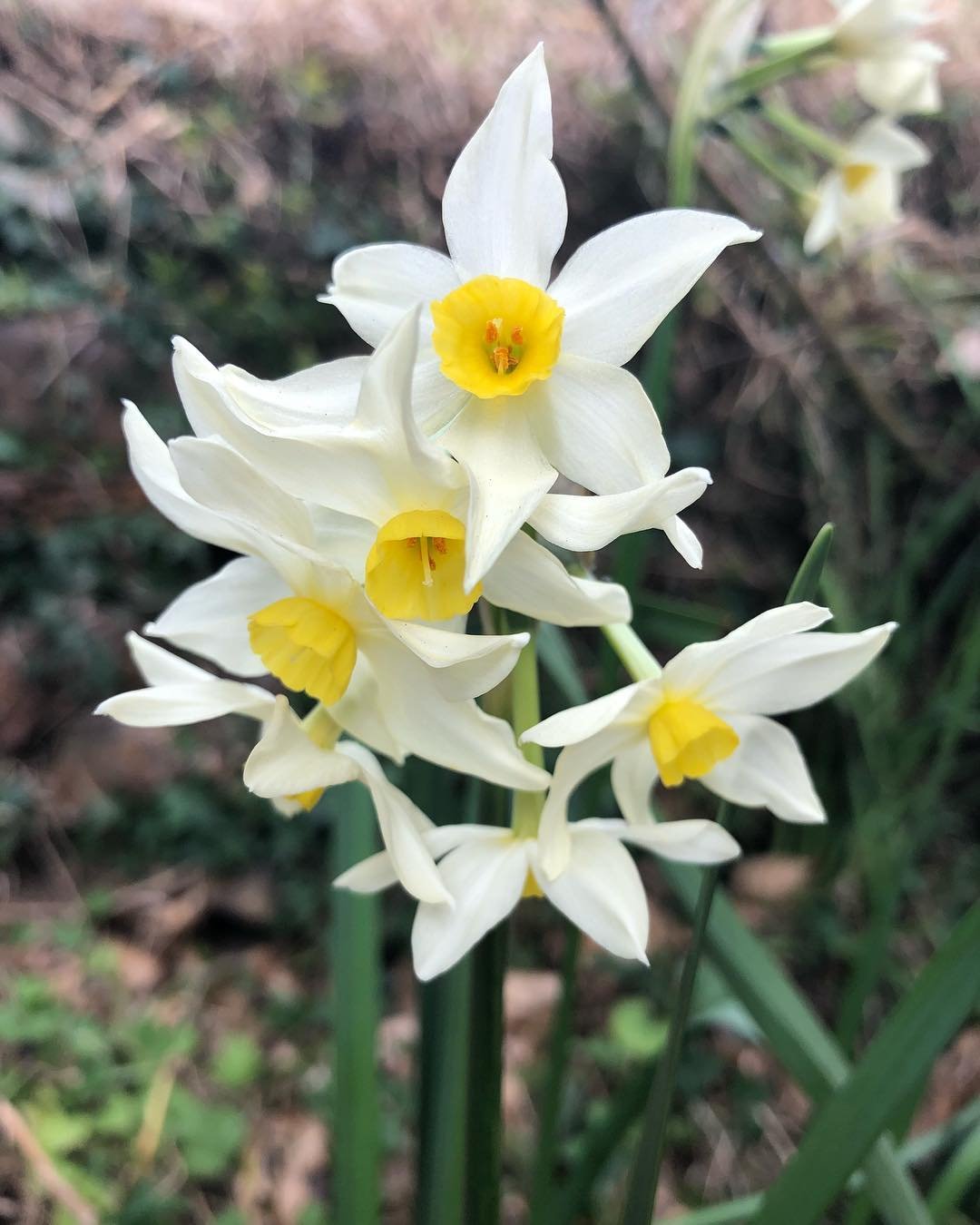
Here’s a chart with information about the Jonquil flower:
| Category | Details |
|---|---|
| Botanical Name | Narcissus jonquilla |
| Common Name | Jonquil |
| Plant Zone | 4-10 |
| Sun Exposure | Full sun to partial shade |
| Soil Type | Well-drained, fertile soil |
| Watering | Moderate watering |
| Growth Habit | Clump-forming, bulbous perennial |
| Height/Spread | 12-18 inches in height, 4-6 inches spread |
| Special Features | Fragrant flowers, deer-resistant, attracts pollinators |
Jonquils are like small daffodils. They have yellow flowers and smell nice. Jonquils grow from bulbs and bloom in spring. They’re good for cutting gardens.
3. Jacob’s Ladder
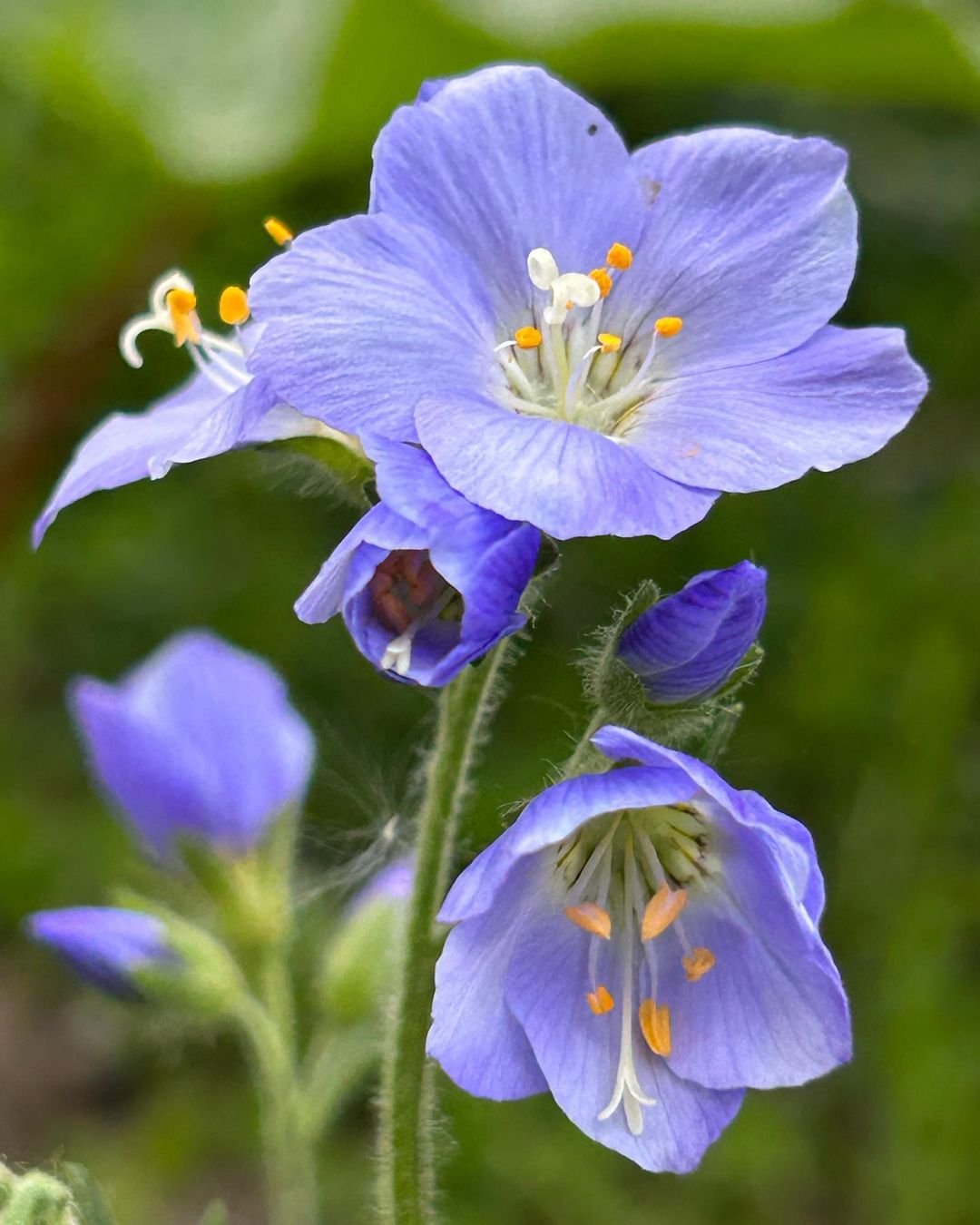
Here’s an organized chart for Jacob’s Ladder (Polemonium):
| Category | Information |
|---|---|
| Botanical Name | Polemonium spp. |
| Common Name | Jacob’s Ladder |
| Plant Type | Perennial |
| USDA Hardiness Zone | 3-8 |
| Sun Exposure | Full sun to part shade |
| Soil Type | Well-draining, fertile soil |
| Watering | Regular; keep soil evenly moist |
| Growth Habit | Upright, clumping |
| Height/Spread | 1-3 feet tall, 1-2 feet wide |
| Special Features | Fern-like foliage, blue or white flowers in spring |
Jacob’s Ladder has blue or white flowers that look like bells. The leaves look like little ladders. This flower likes cool weather and some shade. It’s good for rock gardens.
4. Japanese Anemone
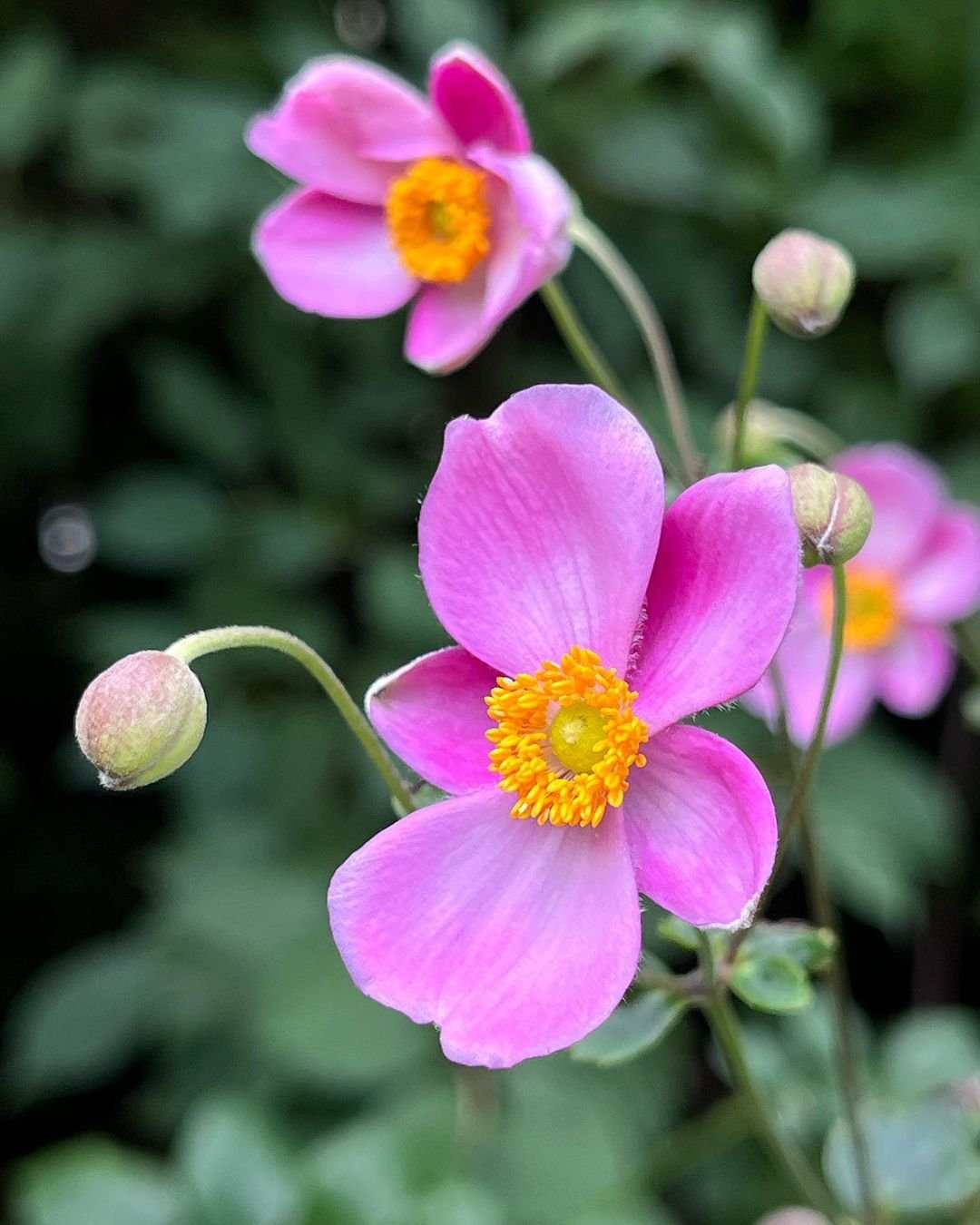
Here’s a comprehensive chart for Japanese Anemone (Anemone hupehensis):
| Category | Information |
|---|---|
| Botanical Name | Anemone hupehensis |
| Common Name | Japanese Anemone |
| Plant Type | Perennial |
| USDA Hardiness Zone | 4-8 |
| Sun Exposure | Partial shade to full sun |
| Soil Type | Rich, moist, well-draining soil |
| Watering | Regular; keep soil consistently moist |
| Growth Habit | Clumping, spreading |
| Height/Spread | 1-4 feet tall, 1-3 feet wide |
| Special Features | Elegant, cup-shaped flowers in late summer to fall; deer-resistant |
Japanese Anemones have pink or white flowers on tall stems. They bloom in late summer and fall. These flowers are good for shady gardens.
5. Jupiter’s Beard
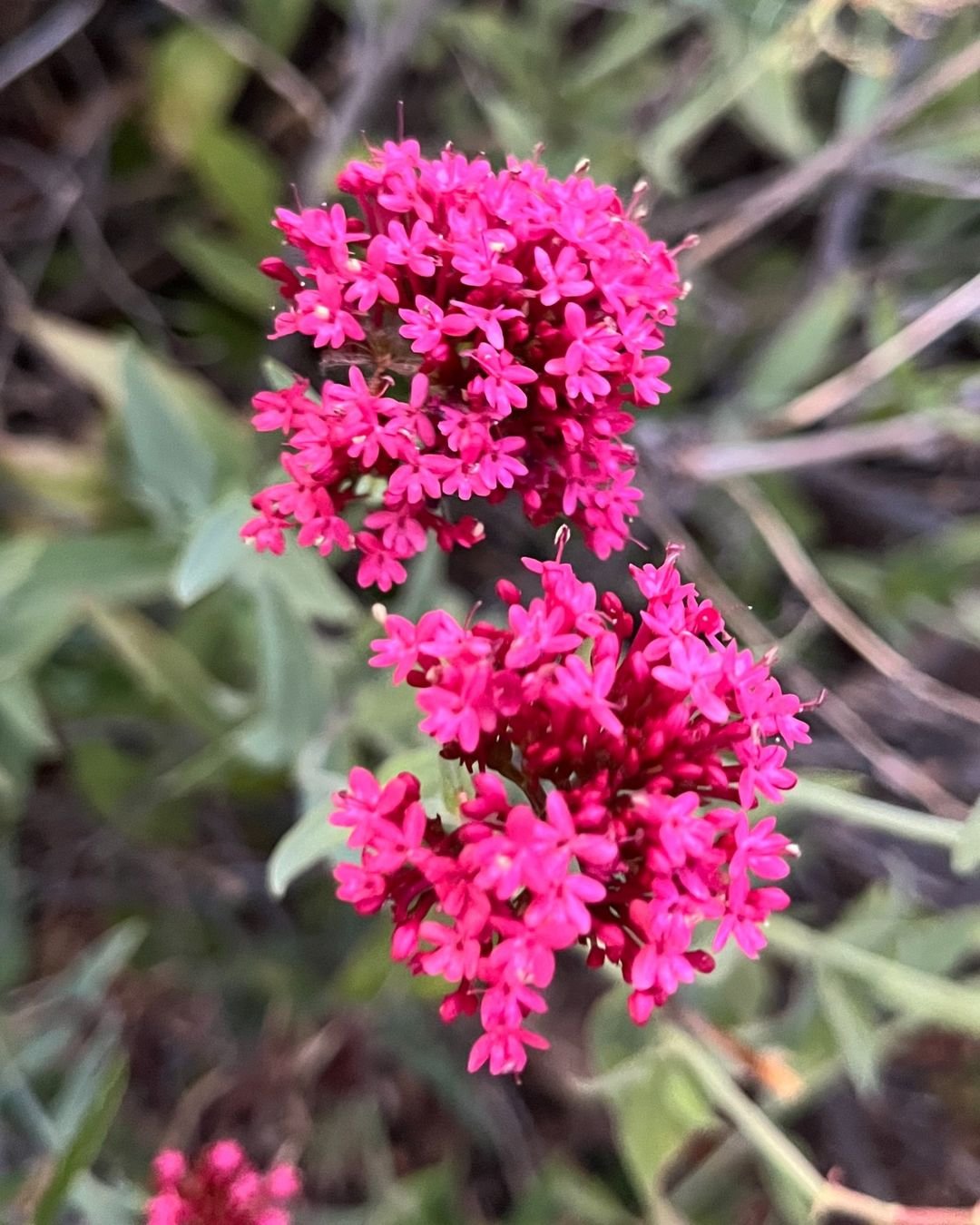
Here’s an organized chart of information about Jupiter’s Beard (Centranthus ruber):
| Category | Information |
|---|---|
| Botanical Name | Centranthus ruber |
| Common Name | Jupiter’s Beard, Red Valerian |
| Plant Type | Perennial |
| Hardiness Zone | Zones 5-9 (may vary with cultivar) |
| Sun Exposure | Full sun to part shade |
| Soil Type | Well-draining, fertile soil |
| Watering | Moderate; drought tolerant once established |
| Growth Habit | Upright, clump-forming |
| Height/Spread | 1.5 to 3 feet tall, 1 to 2 feet wide |
| Special Features | Attracts butterflies and hummingbirds, long blooming season |
Jupiter’s Beard, also called Red Valerian, has small pink or red flowers. It’s easy to grow and likes sunny spots. Butterflies love this flower.
6. Joe Pye Weed
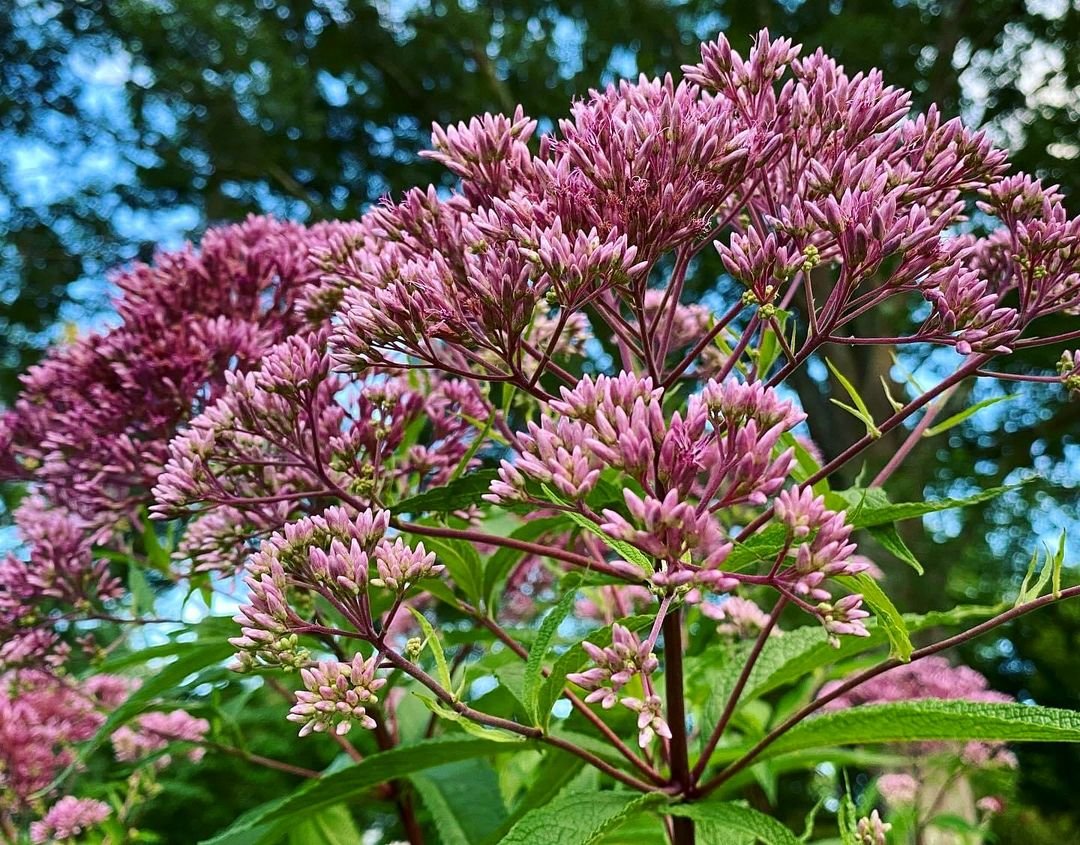
Here’s the information chart for Joe Pye Weed (Eutrochium purpureum):
| Category | Information |
|---|---|
| Botanical Name | Eutrochium purpureum |
| Common Name | Joe Pye Weed |
| Plant Type | Perennial herbaceous |
| Hardiness Zone | Zones 4-9 |
| Sun Exposure | Full sun to part shade |
| Soil Type | Moist to wet, rich soil |
| Watering | Consistently moist |
| Growth Habit | Upright, clump-forming |
| Height/Spread | 4 to 7 feet tall, 2 to 4 feet wide |
| Special Features | Attracts pollinators (butterflies, bees), deer resistant, tall architectural presence |
Joe Pye Weed is a tall plant with pink flowers. It can grow up to 7 feet tall! This flower is great for big gardens and attracts butterflies.
7. Johnny Jump Up
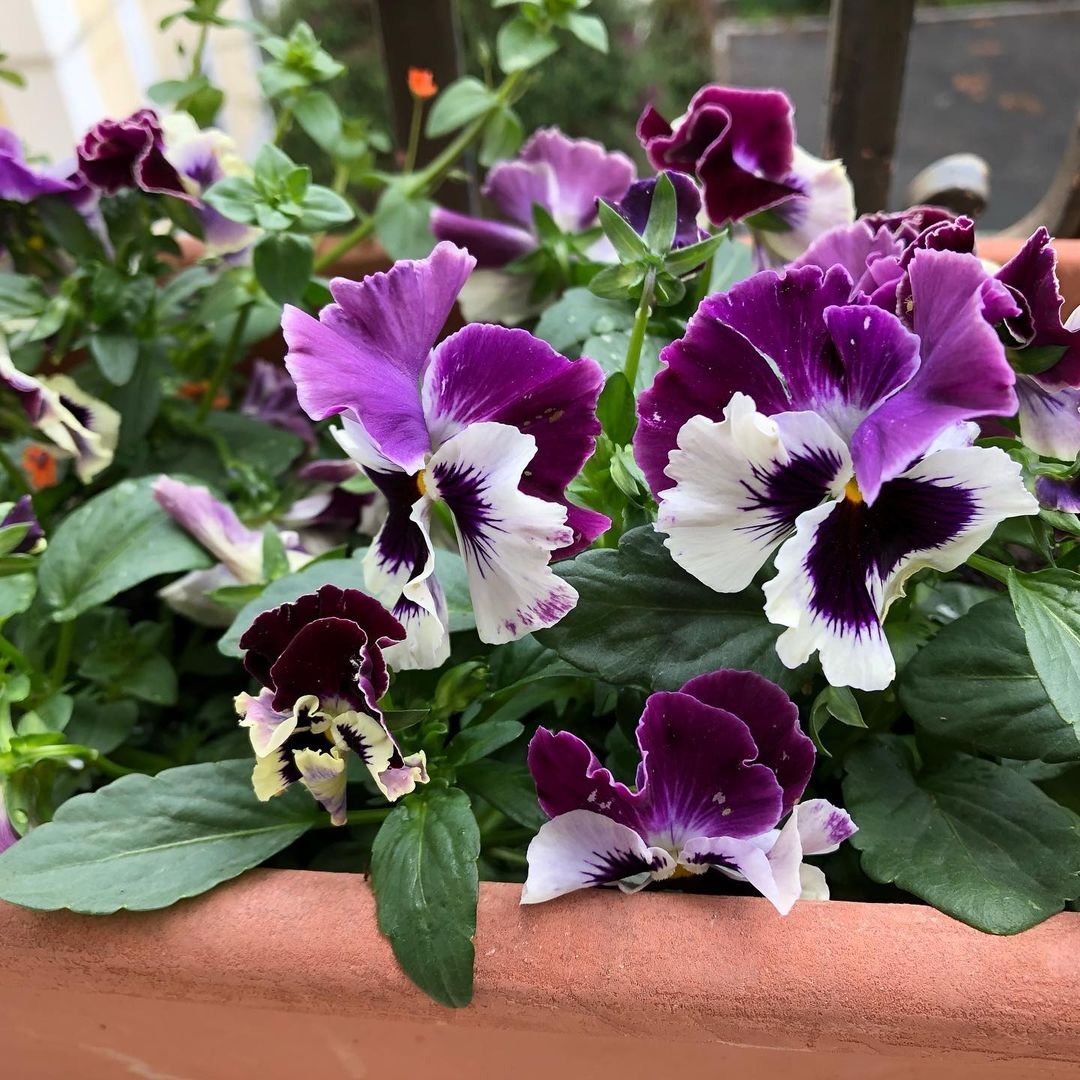
Here’s a chart with information about the Johnny Jump Up flower:
| Category | Details |
|---|---|
| Botanical Name | Viola tricolor |
| Common Name | Johnny Jump Up |
| Plant Zone | 3-9 |
| Sun Exposure | Full sun to partial shade |
| Soil Type | Well-drained, moderately fertile soil |
| Watering | Moderate watering |
| Growth Habit | Clump-forming, annual or short-lived perennial |
| Height/Spread | 6-12 inches in height, 6-8 inches spread |
| Special Features | Edible flowers, attracts pollinators, long blooming season |
Johnny Jump Ups are small flowers that look like tiny pansies. They come in purple, yellow, and white. These flowers are easy to grow and can bloom all summer.
8. Jerusalem Artichoke
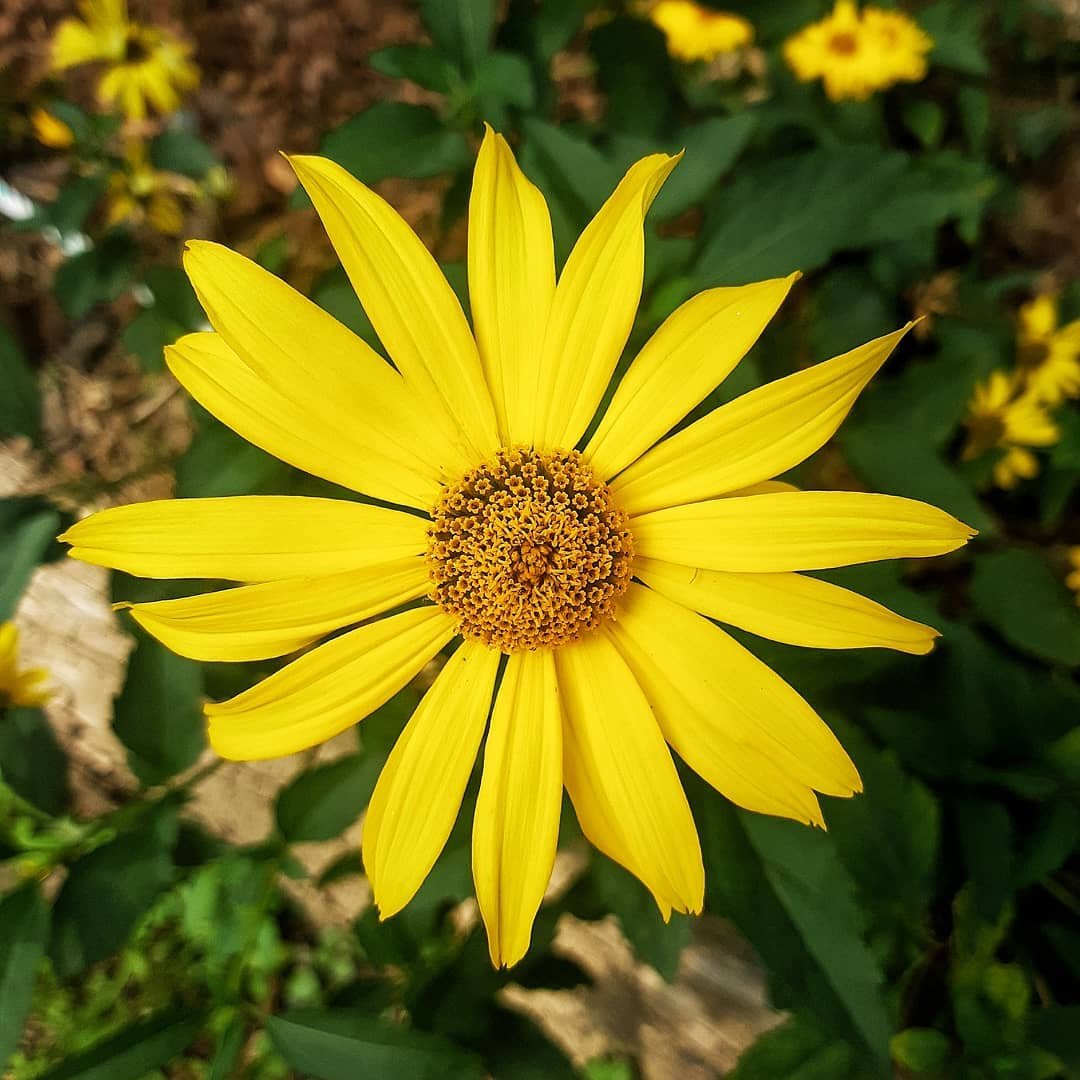
Here’s a chart with information about the Jerusalem Artichoke flower:
| Category | Details |
|---|---|
| Botanical Name | Helianthus tuberosus |
| Common Name | Jerusalem Artichoke, Sunchoke |
| Plant Zone | 3-9 |
| Sun Exposure | Full sun |
| Soil Type | Well-drained, sandy or loamy soil |
| Watering | Moderate watering |
| Growth Habit | Herbaceous perennial |
| Height/Spread | 6-10 feet in height, 3-4 feet spread |
| Special Features | Edible tubers, attracts pollinators, drought-tolerant |
Jerusalem Artichokes have yellow flowers that look like small sunflowers. The roots are edible. This plant can grow very tall and is good for wildlife gardens.
9. Japanese Iris
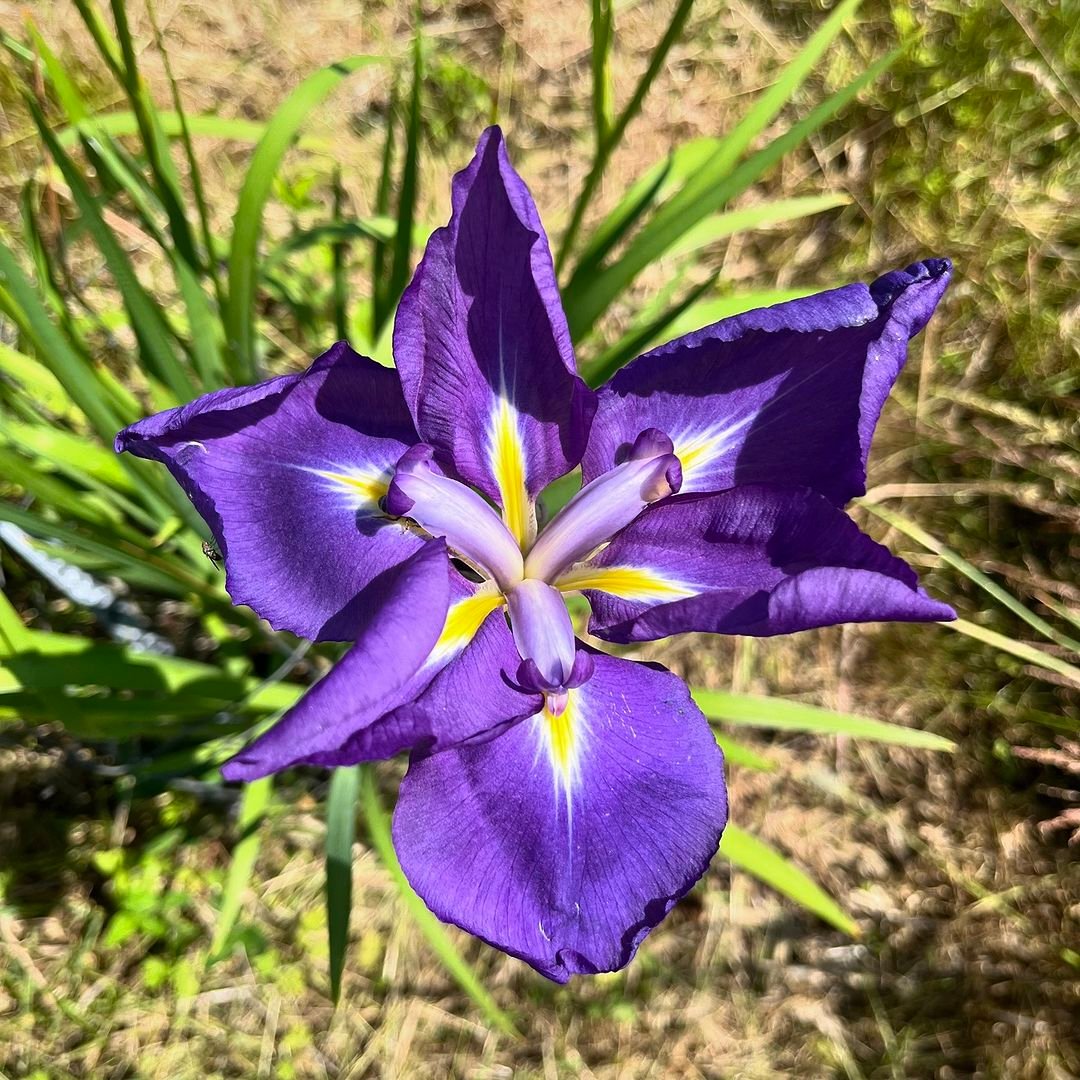
Here’s a chart with information about the Japanese Iris flower:
| Category | Details |
|---|---|
| Botanical Name | Iris ensata |
| Common Name | Japanese Iris |
| Plant Zone | 4-9 |
| Sun Exposure | Full sun to partial shade |
| Soil Type | Acidic, moist to wet soil |
| Watering | Regular watering, keep soil consistently moist |
| Growth Habit | Clump-forming, rhizomatous perennial |
| Height/Spread | 2-4 feet in height, 2-3 feet spread |
| Special Features | Large, showy flowers, deer-resistant, attracts pollinators |
Japanese Iris has big, flat flowers in purple, white, or blue. It likes wet soil and can grow near water. These flowers bloom in early summer.
10. Jewel Weed
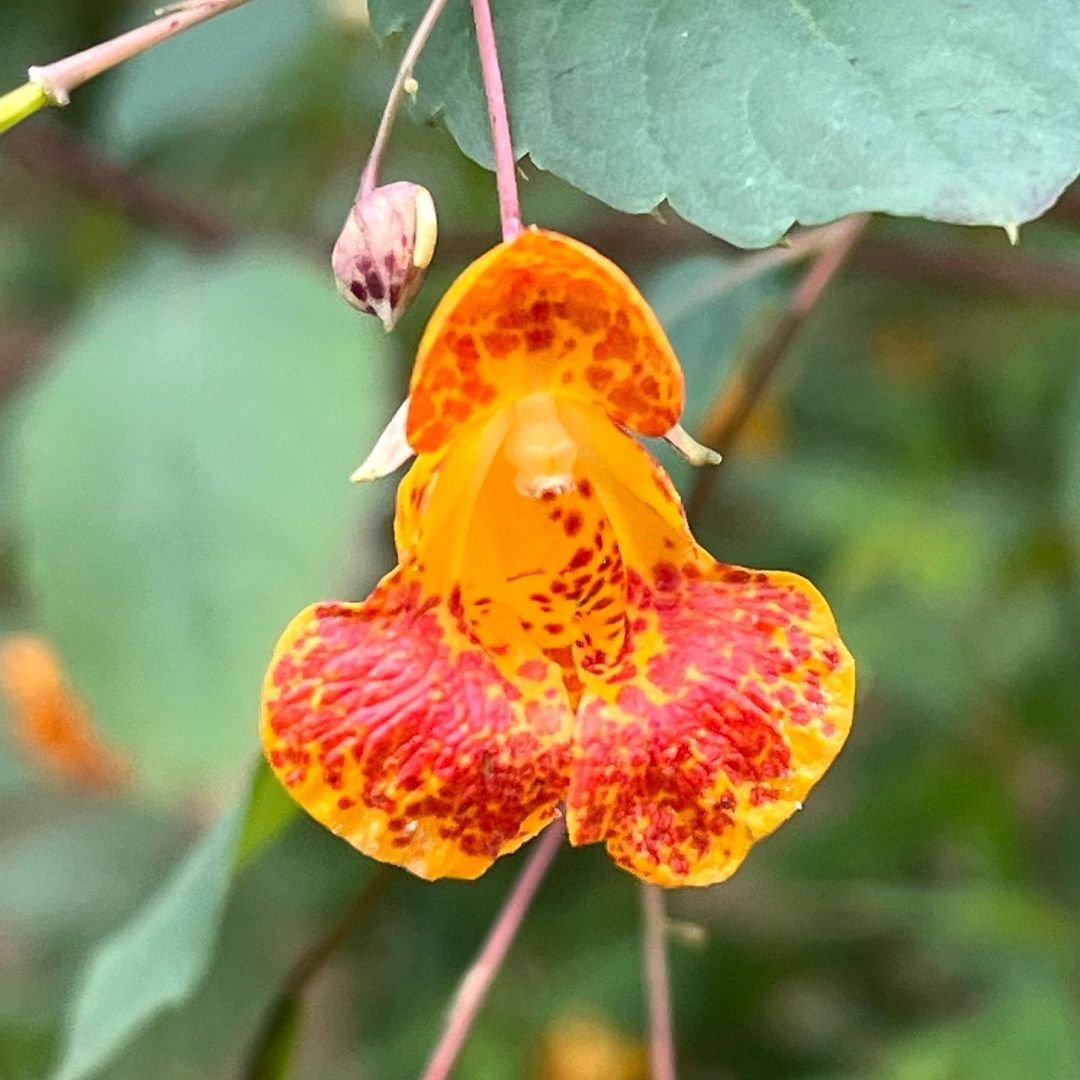
Here’s a chart with information about the Jewel Weed flower:
| Category | Details |
|---|---|
| Botanical Name | Impatiens capensis |
| Common Name | Jewel Weed, Touch-Me-Not |
| Plant Zone | 2-11 |
| Sun Exposure | Partial shade to full shade |
| Soil Type | Moist, humus-rich soil |
| Watering | Regular watering |
| Growth Habit | Annual, bushy |
| Height/Spread | 2-5 feet in height, 1-2 feet spread |
| Special Features | Attracts pollinators, deer-resistant, medicinal properties |
Jewel Weed has orange or yellow flowers that look like little trumpets. It grows in damp places and is good for shade gardens.
11. Jack-in-the-Pulpit
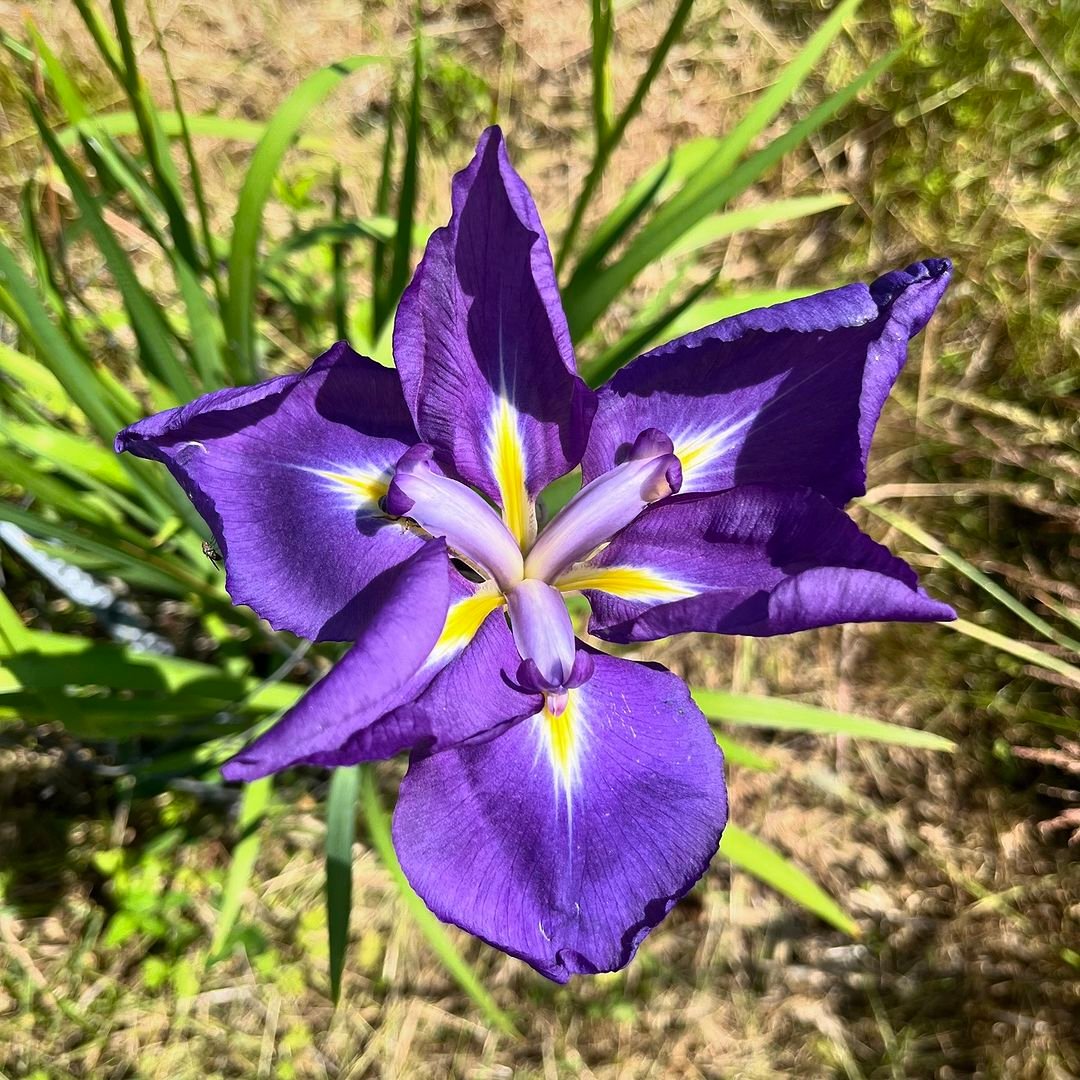
Here’s a chart with information about the Jack-in-the-Pulpit flower:
| Category | Details |
|---|---|
| Botanical Name | Arisaema triphyllum |
| Common Name | Jack-in-the-Pulpit |
| Plant Zone | 4-9 |
| Sun Exposure | Partial shade to full shade |
| Soil Type | Moist, well-drained, rich in organic matter |
| Watering | Regular watering, keep soil consistently moist |
| Growth Habit | Herbaceous perennial |
| Height/Spread | 1-3 feet in height, 1-1.5 feet spread |
| Special Features | Unique flower structure, attracts pollinators, berries in fall |
Jack-in-the-Pulpit is a strange-looking flower. It has a green or purple hood over a spike. This plant likes shady, damp woods.
12. Japanese Quince
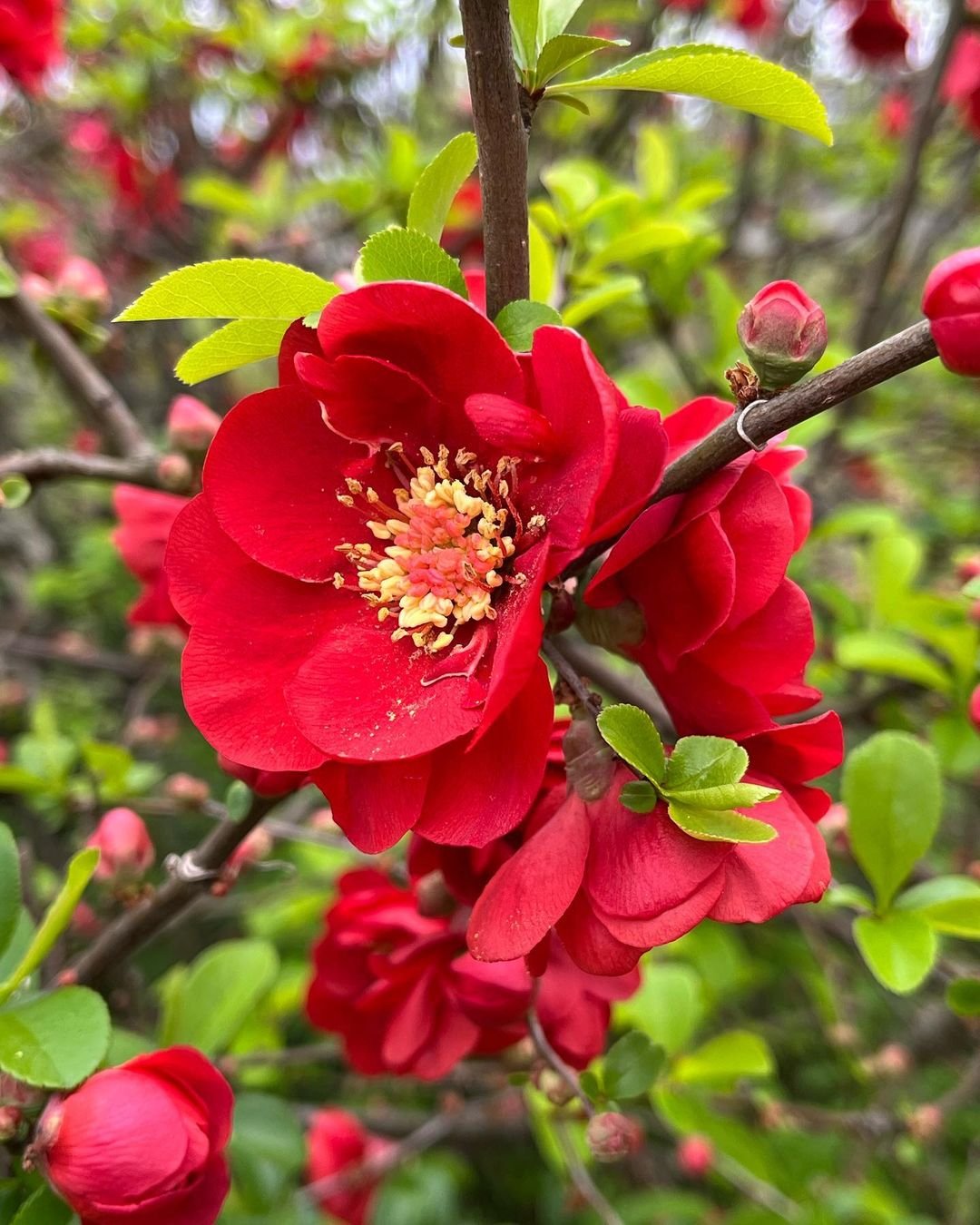
Here’s a chart with information about the Red Japanese Quince flower:
| Category | Details |
|---|---|
| Botanical Name | Chaenomeles speciosa |
| Common Name | Red Japanese Quince |
| Plant Zone | 4-9 |
| Sun Exposure | Full sun to partial shade |
| Soil Type | Well-drained, moderately fertile soil |
| Watering | Moderate watering, drought-tolerant once established |
| Growth Habit | Deciduous shrub |
| Height/Spread | 6-10 feet in height, 6-10 feet spread |
| Special Features | Early spring blooms, attracts pollinators, produces edible fruit, thorny branches |
Japanese Quince is a bush with bright red or pink flowers in spring. It can have small fruits later. This plant is good for making hedges.
13. Jungle Geranium
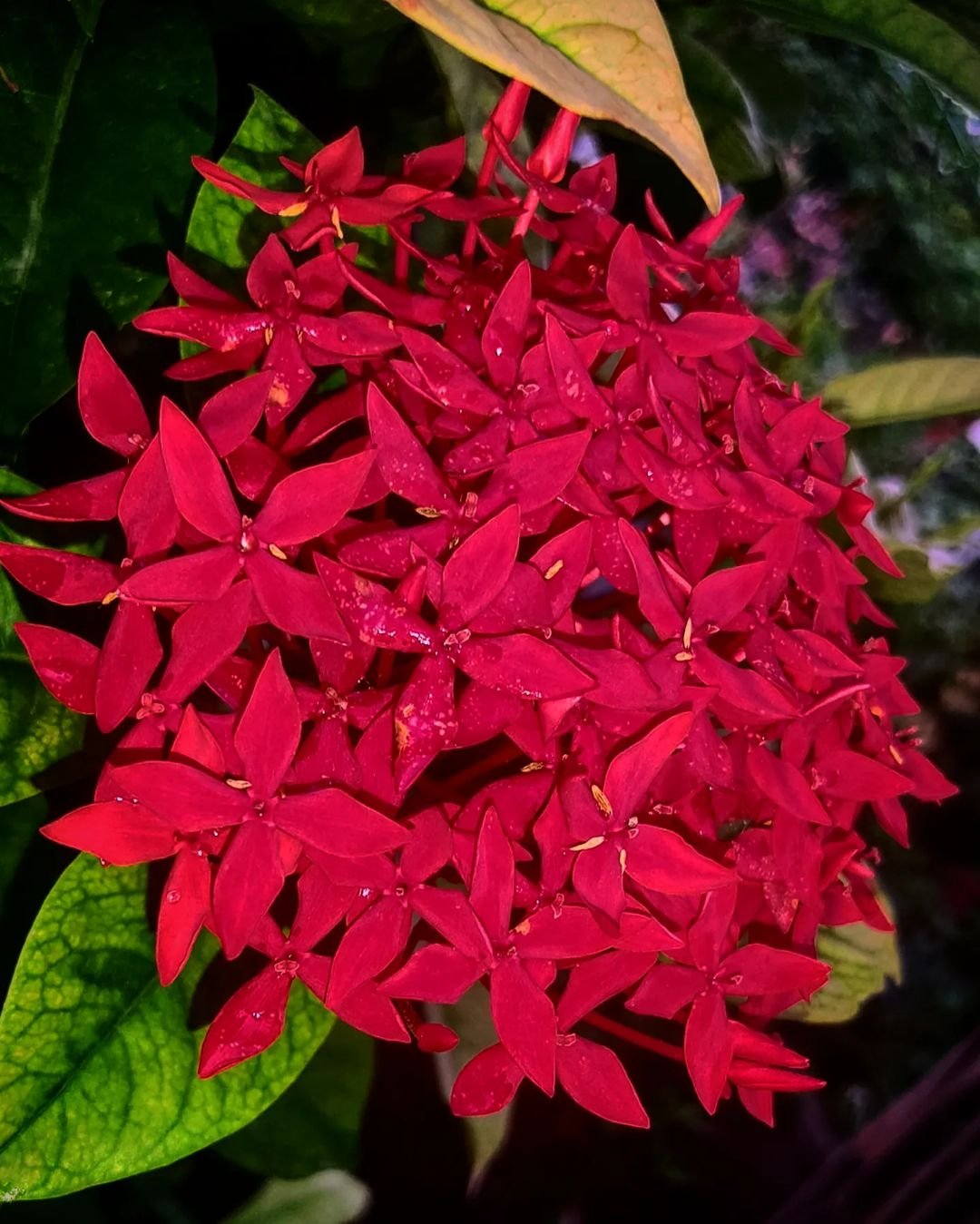
Here’s a chart with information about the Jungle Geranium flower:
| Category | Details |
|---|---|
| Botanical Name | Ixora coccinea |
| Common Name | Jungle Geranium, Flame of the Woods |
| Plant Zone | 9-11 |
| Sun Exposure | Full sun to partial shade |
| Soil Type | Well-drained, slightly acidic soil |
| Watering | Regular watering, keep soil moist but not waterlogged |
| Growth Habit | Evergreen shrub |
| Height/Spread | 4-6 feet in height, 3-4 feet spread |
| Special Features | Showy, clusters of bright flowers, attracts pollinators, evergreen foliage |
Jungle Geranium, also called Ixora, has clusters of small red, orange, or yellow flowers. It likes warm weather and can grow indoors in cold places.
14. Justicia
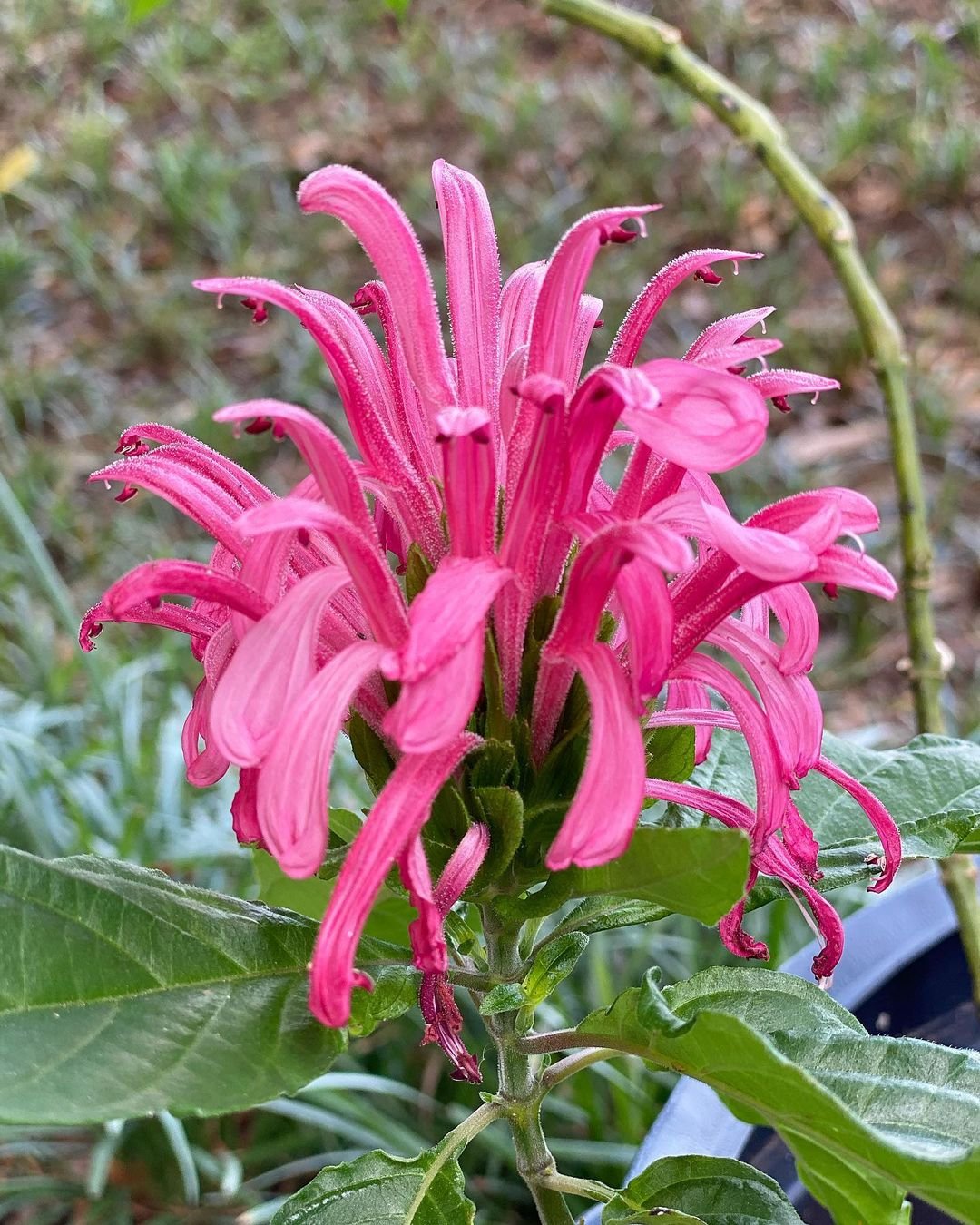
Here’s a chart with information about the Justicia flower:
| Category | Details |
|---|---|
| Botanical Name | Justicia spp. |
| Common Name | Justicia, Water Willow |
| Plant Zone | 9-11 |
| Sun Exposure | Full sun to partial shade |
| Soil Type | Well-drained, rich soil |
| Watering | Regular watering, prefers consistent moisture |
| Growth Habit | Herbaceous perennial or shrub |
| Height/Spread | 2-4 feet in height, 2-3 feet spread |
| Special Features | Showy, tubular flowers, attracts pollinators, often used in tropical and subtropical gardens |
Justicia, also called Shrimp Plant, has flowers that look like pink or yellow shrimp. It can grow in pots and likes partial shade.
15. Japanese Honeysuckle
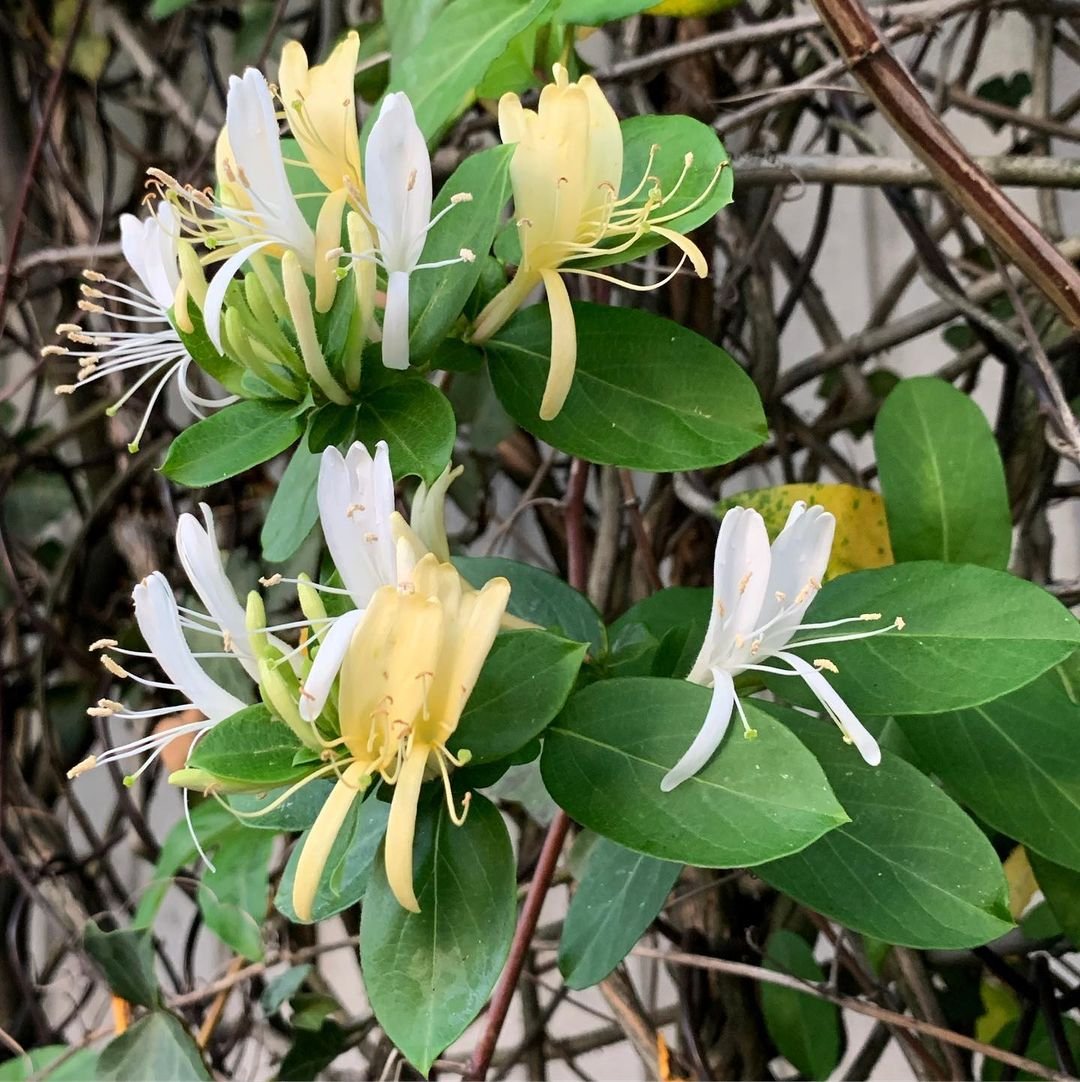
Here’s a chart with information about the Japanese Honeysuckle flower:
| Category | Details |
|---|---|
| Botanical Name | Lonicera japonica |
| Common Name | Japanese Honeysuckle |
| Plant Zone | 4-9 |
| Sun Exposure | Full sun to partial shade |
| Soil Type | Well-drained, adaptable to various soil types |
| Watering | Moderate watering, drought-tolerant once established |
| Growth Habit | Vining, invasive in some areas |
| Height/Spread | 15-30 feet in height, indefinite spread |
| Special Features | Fragrant flowers, attracts pollinators, can be invasive |
Japanese Honeysuckle has sweet-smelling white or yellow flowers. It’s a vine that grows fast. Be careful, as it can spread too much in some places.
16. Jerusalem Sage
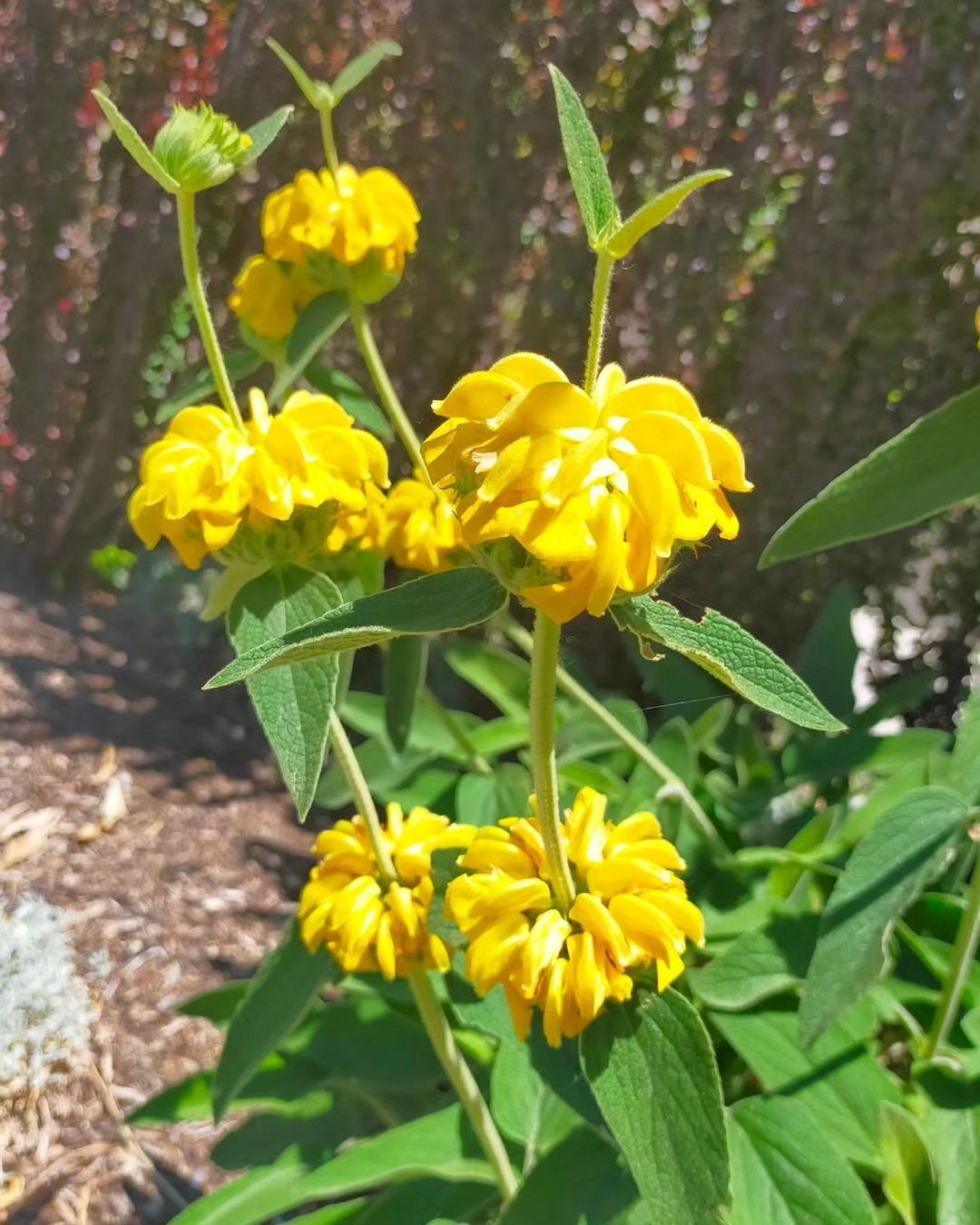
Here’s a chart with information about the Jerusalem Sage flower:
| Category | Details |
|---|---|
| Botanical Name | Phlomis fruticosa |
| Common Name | Jerusalem Sage |
| Plant Zone | 7-10 |
| Sun Exposure | Full sun |
| Soil Type | Well-drained, poor to moderately fertile soil |
| Watering | Low to moderate watering, drought-tolerant once established |
| Growth Habit | Woody perennial shrub |
| Height/Spread | 3-4 feet in height, 3-4 feet spread |
| Special Features | Unique whorled flower clusters, attracts pollinators, evergreen foliage in mild climates |
Jerusalem Sage has yellow flowers that look like little hoods. The leaves are soft and fuzzy. This plant likes sunny, dry spots.
17. June Flower
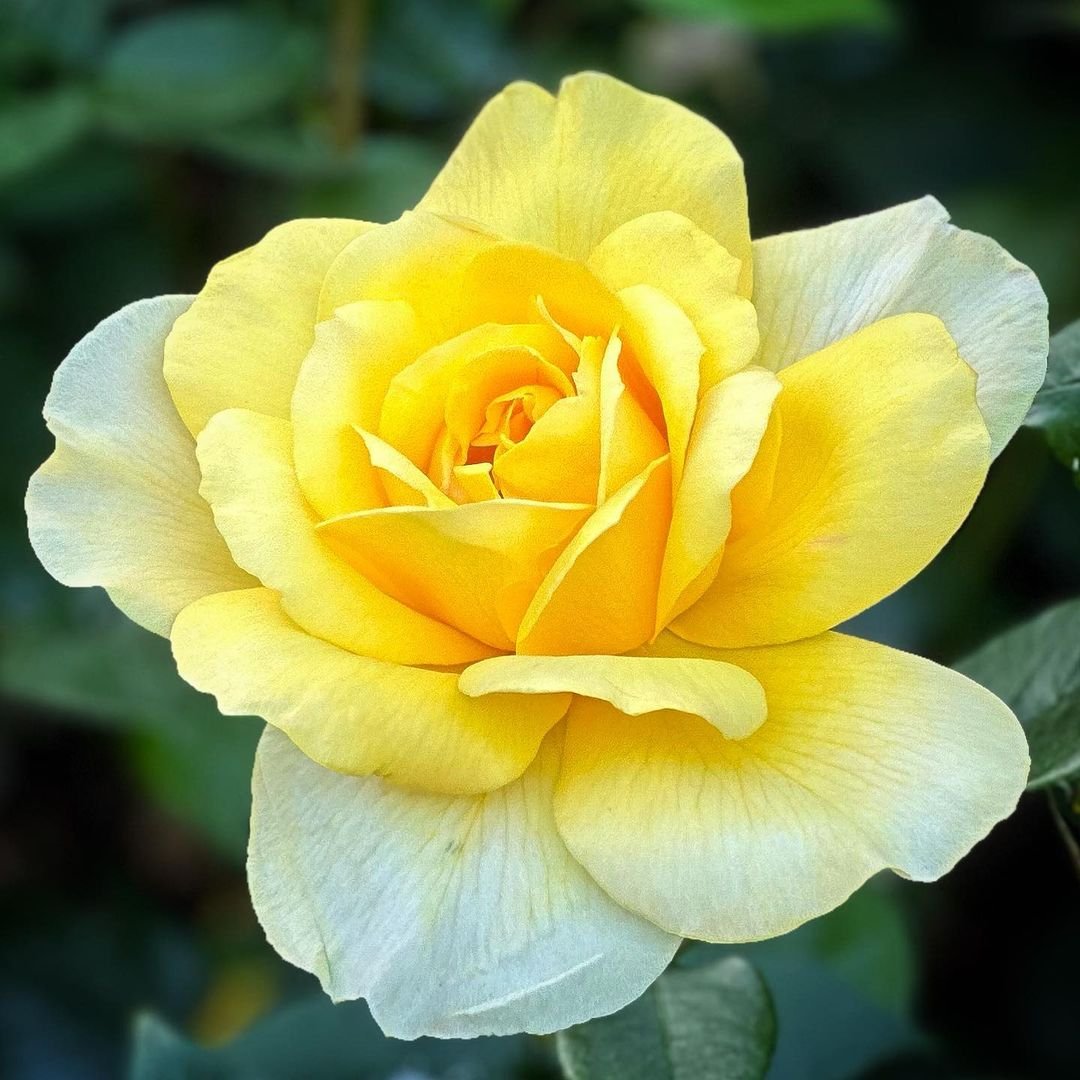
ere’s a chart with information about the June Flower:
| Category | Details |
|---|---|
| Botanical Name | Astrantia major |
| Common Name | June Flower, Masterwort |
| Plant Zone | 4-8 |
| Sun Exposure | Full sun to partial shade |
| Soil Type | Well-drained, moderately fertile soil |
| Watering | Moderate watering |
| Growth Habit | Herbaceous perennial |
| Height/Spread | 1-2 feet in height, 1-1.5 feet spread |
| Special Features | Unique, star-shaped flowers, long blooming period, attracts pollinators |
June Flower, also called Tradescantia, has small purple flowers with three petals. It’s easy to grow and can spread to cover the ground.
18. Jimsonweed
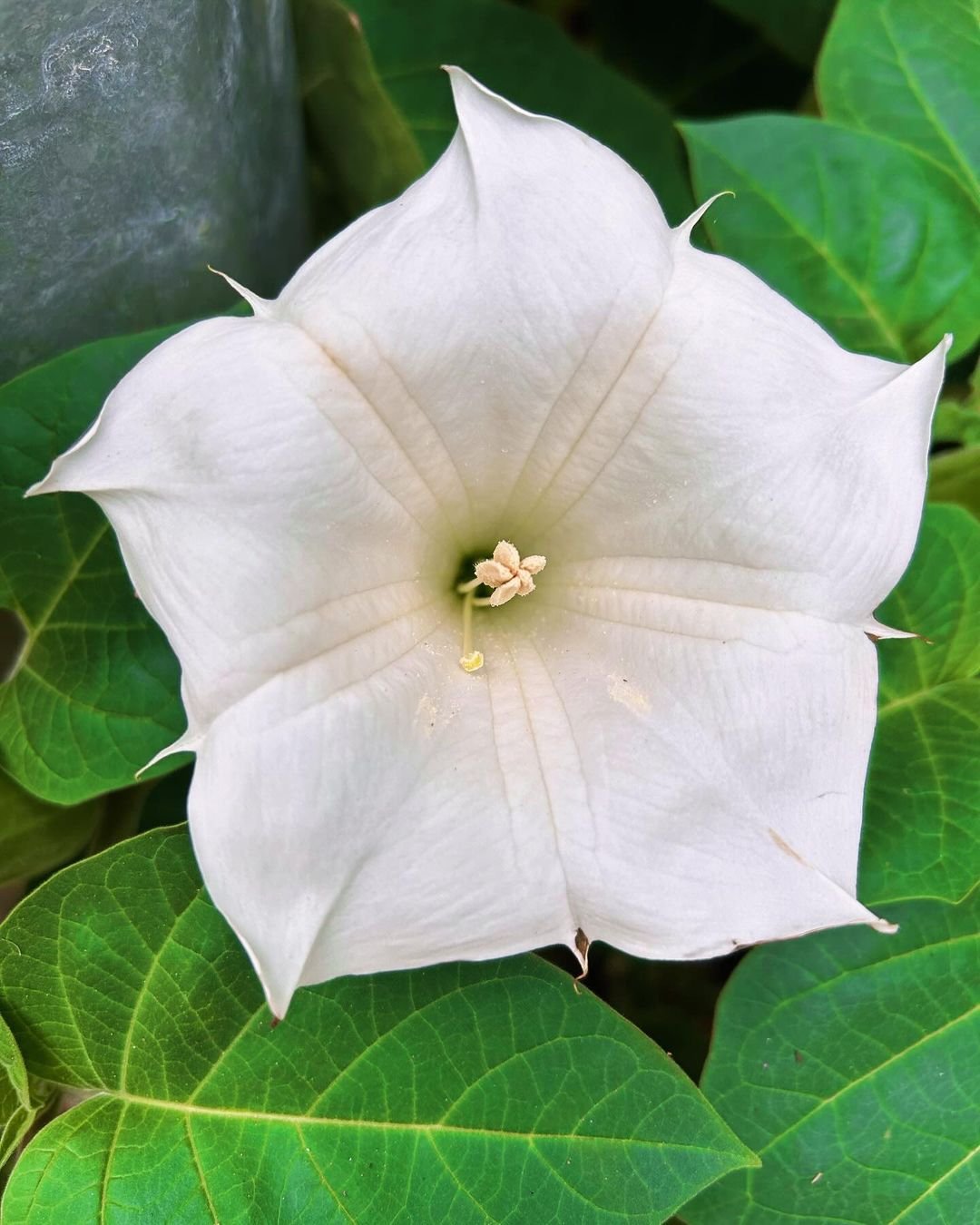
Here’s a chart with information about Jimsonweed:
| Category | Details |
|---|---|
| Botanical Name | Datura stramonium |
| Common Name | Jimsonweed, Devil’s Trumpet |
| Plant Zone | 9-11 |
| Sun Exposure | Full sun to partial shade |
| Soil Type | Well-drained, adaptable to various soil types |
| Watering | Moderate watering |
| Growth Habit | Annual or short-lived perennial |
| Height/Spread | 3-5 feet in height, 3-4 feet spread |
| Special Features | Large, trumpet-shaped flowers, toxic if ingested, attracts pollinators |
Jimsonweed has big white or purple flowers that open at night. This plant can be poisonous, so be careful if you have kids or pets.
19. Jungle Flame
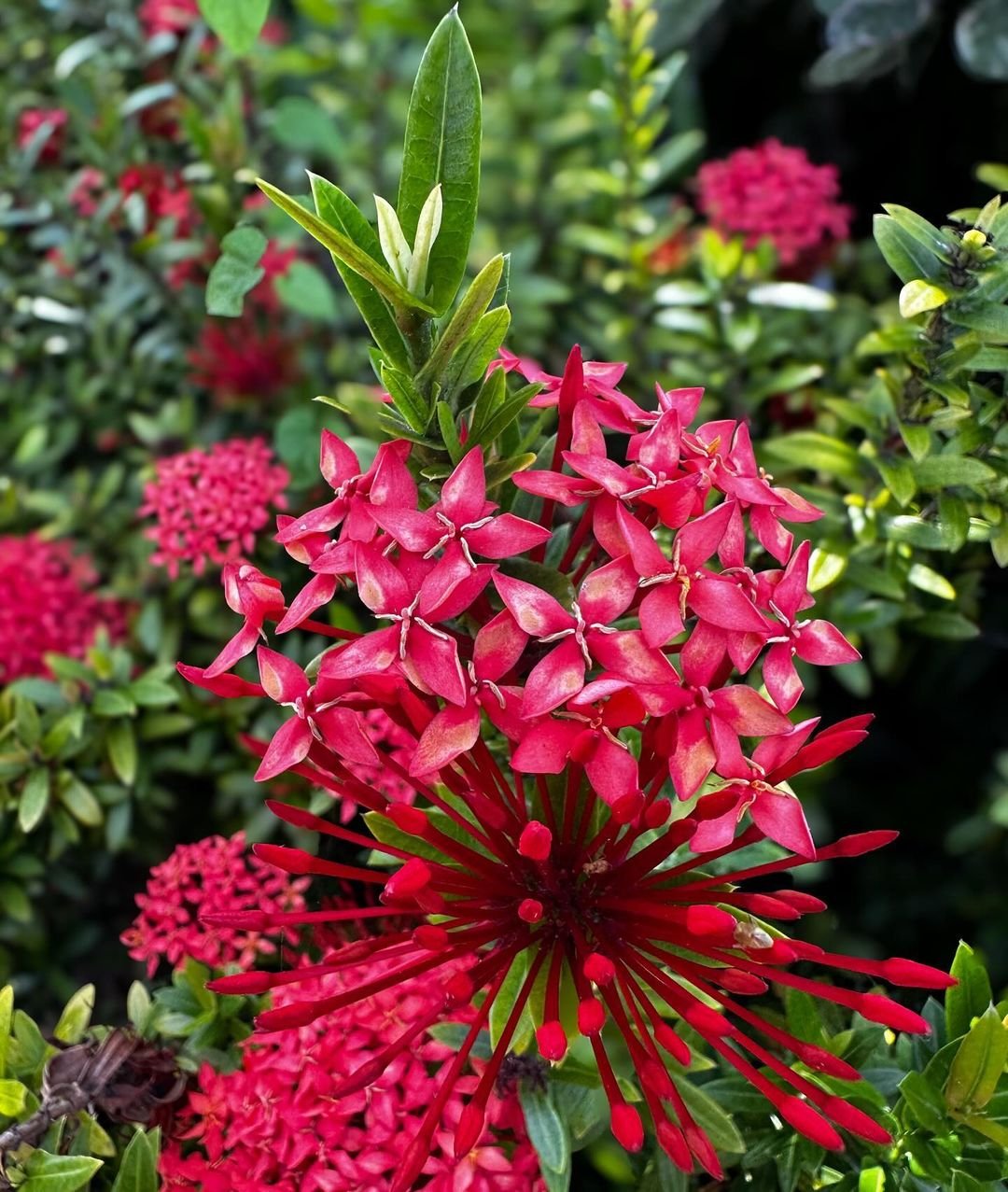
Here’s a chart with information about the Jungle Flame flower:
| Category | Details |
|---|---|
| Botanical Name | Ixora coccinea |
| Common Name | Jungle Flame, Flame of the Woods |
| Plant Zone | 9-11 |
| Sun Exposure | Full sun to partial shade |
| Soil Type | Well-drained, slightly acidic soil |
| Watering | Regular watering, prefers consistent moisture |
| Growth Habit | Evergreen shrub |
| Height/Spread | 4-6 feet in height, 3-4 feet spread |
| Special Features | Bright, clustered flowers, attracts pollinators, evergreen foliage |
Jungle Flame is another name for Ixora. It has bright orange or red flowers in round clusters. This plant likes warm weather and full sun.
20. Jacaranda
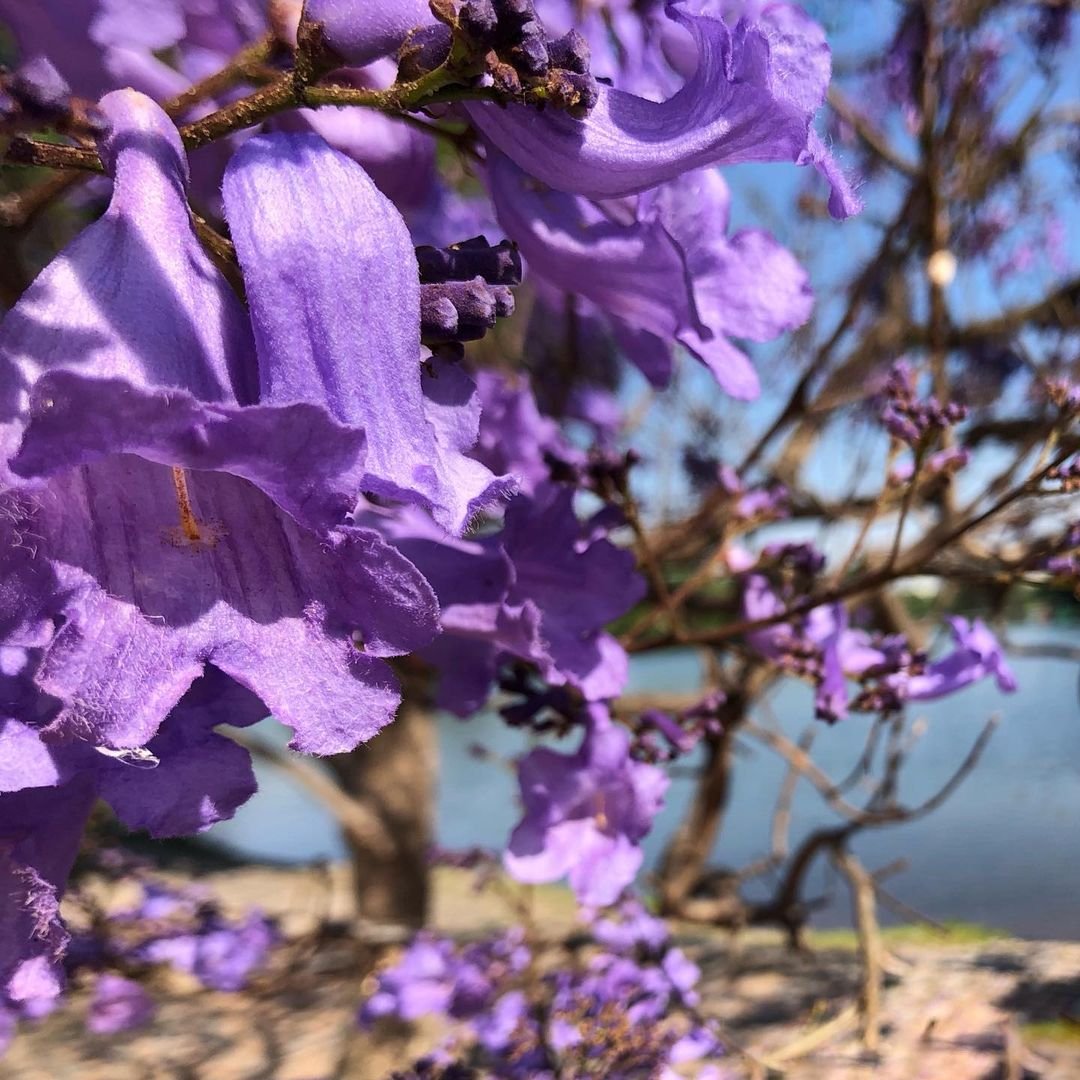
Here’s a chart with information about the Jacaranda flower:
| Category | Details |
|---|---|
| Botanical Name | Jacaranda mimosifolia |
| Common Name | Jacaranda |
| Plant Zone | 9-11 |
| Sun Exposure | Full sun |
| Soil Type | Well-drained, slightly acidic to neutral soil |
| Watering | Moderate watering, drought-tolerant once established |
| Growth Habit | Deciduous tree |
| Height/Spread | 30-50 feet in height, 20-40 feet spread |
| Special Features | Stunning lavender-blue flowers, fern-like foliage, attracts pollinators |
Jacaranda is a tree with beautiful purple-blue flowers. It grows in warm places and can make whole streets look purple when it blooms.
Tips for Growing J Flowers
- Check your soil: Different flowers like different types of soil. Test your soil to see what will grow best.
- Know your sun: Some flowers like full sun, others like shade. Plant them in the right spot.
- Water right: Don’t water too much or too little. Learn what each flower needs.
- Use mulch: Mulch helps keep water in the soil and stops weeds.
- Watch for pests: Look for bugs or sick leaves. Ask for help if you’re not sure what’s wrong.
Growing flowers is fun and makes your home look nice. Try some of these J flowers in your garden!
Fun Facts About J Flowers
- Jasmine is used to make tea and perfume.
- Jonquils are named after a character in Greek myths.
- Joe Pye Weed was named after a Native American healer.
- Japanese Iris can grow in water gardens.
- Jimsonweed is also called “moon flower” because it blooms at night.
Remember, some of these flowers might grow better in certain places. Check what grows well where you live before you plant. Happy gardening with your new J flowers!

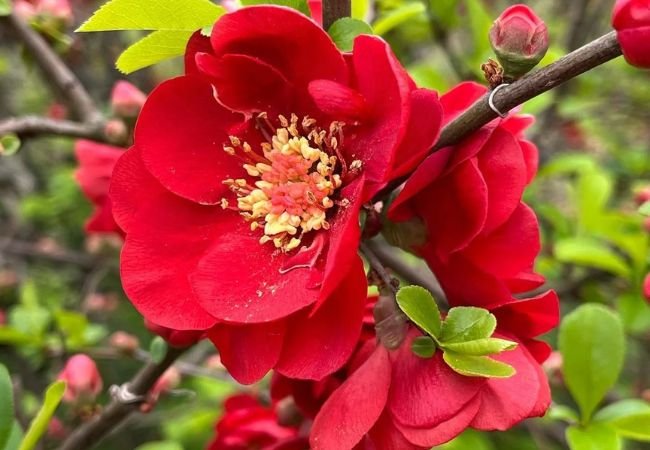





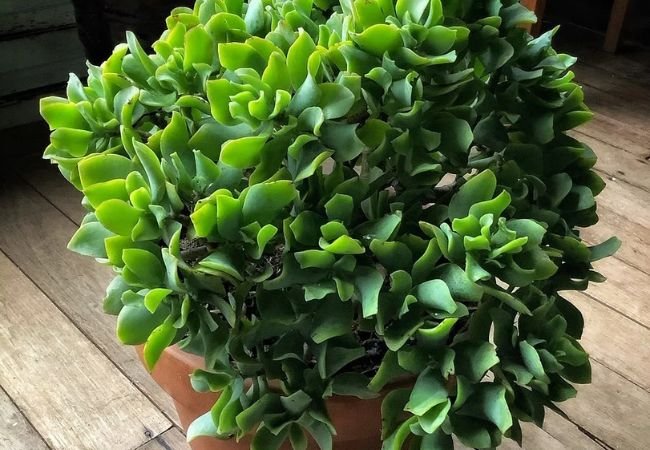
Leave a Reply